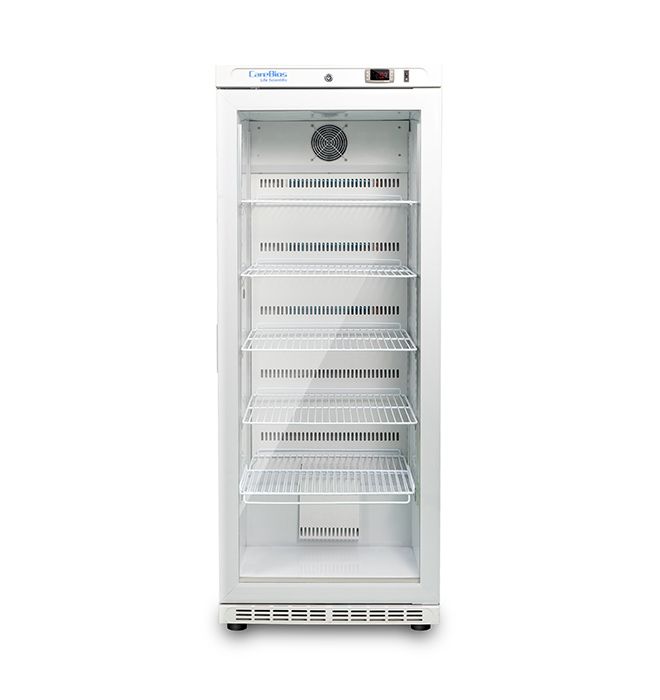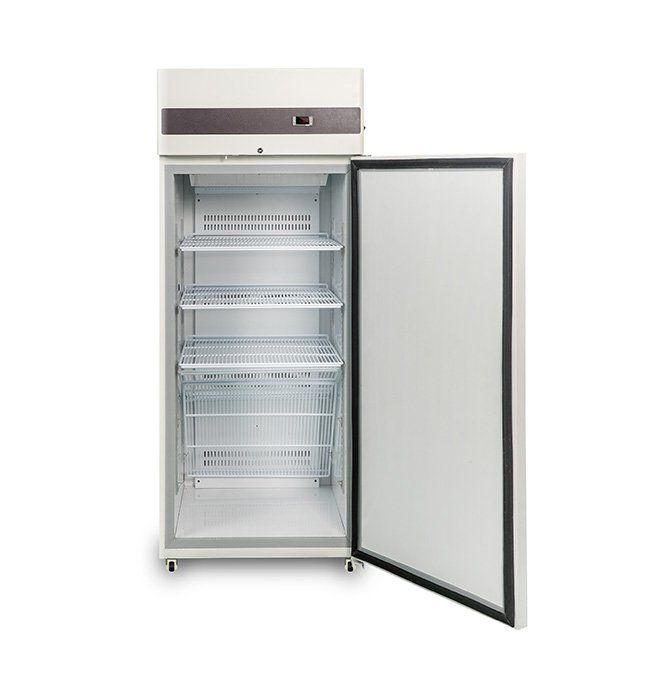Refrigeration Defrost Cycles
When purchasing a refrigerator or freezer for clinical, research, or laboratory use, most people do not take into consideration the type of defrost cycle the unit offers. What they do not realize is that storing temperature sensitive samples (especially vaccines) in the wrong defrost cycle can damage them costing time and money.
Freezers will obviously form frost and ice, but refrigerators are often thought of as a unit that does not go below freezing temperatures. So why worry about the defrost cycle within a refrigerator? Even though the interior of the unit may not fall below freezing, the cooling evaporator tubes, coils, or plates the refrigerator uses for temperature typically do. Frost and ice will eventually form and buildup if some type of defrost does not occur and the type of defrost cycle utilized can dramatically impact interior cabinet temperatures.
Refrigerator Defrost Cycles

Cycle Defrost
For refrigerators, there are two different defrost methods to chose from; cycle defrost or adaptive defrost. Cycle defrost occurs during the actual cycling (the regular on/off cycle) of the compressor, hence the name. This process occurs routinely in the refrigerator. Cycle defrost offers ideal temperature stability as its cycles are shorter and more frequent, as opposed to adaptive defrost where cycles tend to be longer causing higher temperature fluctuation.
Adaptive Defrost Cycle
With adaptive defrost, the refrigerator defrost cycle will only occur when defrosting is needed. This feature uses electronic controls to determine when the refrigerator (or freezer) has too much frost built up and needs to be defrosted. As mentioned before, this process has longer wait periods between each defrost cycle which results in a longer defrost cycle and potentially higher temperature fluctuations for longer periods of time. Adaptive defrost refrigerators are ideal for saving energy, but it is not recommended when it comes to critical samples or vaccine storage.
Freezer Defrost Cycles

Auto Defrost (frost-free)
As for freezer defrost cycles, there are also two different methods; Auto defrost (frost-free) and Manual defrost. The auto-defrost freezers are similar to the refrigerators, incorporating a timer and usually a heater which typically cycle 2-3 times within a 24 hour period. The designs for the auto-defrost units can differ which varies the cycle duration and the interior temperature. This can raise temperatures potentially as much as 15°C which could cause damage to temperature sensitive samples within the unit.
Manual Defrost
Manual defrost freezers require more work having to physically turn the freezer off or unplug the unit. This also requires transferring items quickly from freezer to freezer so you can clean up after the ice has melted. The key advantage of the manual defrost method is not having to worry about temperature spikes found in an auto-defrost freezer that can potentially damage medical and scientific products specifically biological samples such as enzymes.
To learn more about defrost cycles and the laboratory and clinical refrigeration units LABRepCo offers, please contact our specialists at +86-400-118-3626 or visit www.carebios.com.
Post time: Jan-21-2022




